Related Research Articles

The 1876 United States presidential election was the 23rd quadrennial presidential election, held on Tuesday, November 7, 1876, in which Republican nominee Rutherford B. Hayes faced Democrat Samuel J. Tilden. It was one of the most contentious and controversial presidential elections in American history, and gave rise to the Compromise of 1877 by which the Democrats conceded the election to Hayes in return for an end to Reconstruction and the withdrawal of federal troops from the South. After a controversial post-election process, Hayes was declared the winner.

The 1872 United States presidential election was the 22nd quadrennial presidential election, held on Tuesday, November 5, 1872. Despite a split in the Republican Party, incumbent President Ulysses S. Grant defeated Liberal Republican nominee Horace Greeley. The election is notable for being the only presidential election in which a major party nominee died during the election process.
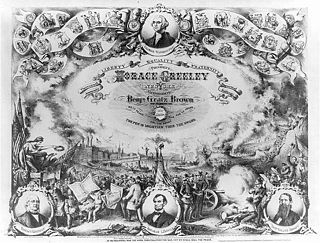
The Liberal Republican Party of the United States was an American political party that was organized in May 1872 to oppose the reelection of President Ulysses S. Grant and his Radical Republican supporters in the presidential election of 1872. The party emerged in Missouri under the leadership of Senator Carl Schurz and soon attracted other opponents of Grant. The party opposed Grant's Reconstruction policies and sought civil service reform. It lost in a landslide and disappeared after the 1872 election.

Daniel Henry Chamberlain was an American planter, lawyer, author and the 76th Governor of South Carolina from 1874 until 1877. The federal government withdrew troops from the state and ended Reconstruction that year. Chamberlain was the last Republican in that office until James B. Edwards was elected in 1974.

Franklin Israel Moses Jr. was a South Carolina lawyer and editor who became active as a Republican politician in the state during the Reconstruction Era. He was elected to the legislature in 1868 and as governor in 1872, serving into 1874. Enemies labelled him the 'Robber Governor'. A 21st-century biographer suggests his crimes were limited compared to those of later Democrat Ben Tillman, who contributed to murders of numerous blacks.
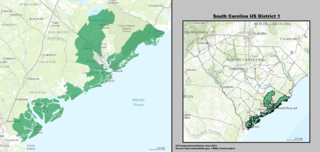
The 1st congressional district of South Carolina is a coastal congressional district in South Carolina, represented by Democrat Joe Cunningham since January 3, 2019. He succeeded Republican Mark Sanford, who was defeated by Katie Arrington in the Republican primary. Cunningham is the first Democrat to represent the district since the 1980s.
The Union Reform Party of South Carolina was a political party of South Carolina during Reconstruction. Originally called the Citizen's Party, it was founded by reform-minded Republicans in the spring of 1870 to oppose the reelection of Governor Robert Kingston Scott. At the time, the electorate of South Carolina was predominantly composed of recently freed slaves who were unwilling to cast a vote for the Democratic Party. The white conservatives of the state recognized that the Democratic Party was a hopeless vehicle for power and instead sought to unite with the bolting Republicans. Not only would the alliance weaken the position of Scott’s government, but the conservatives would then be in a position to influence a new government if elected.
The Conservative Party of South Carolina was a political party of South Carolina during Reconstruction. It was founded in 1874 by James Chestnut from the State Tax Union to provide an organization for the mobilization of white voters. The absence of an active and statewide Democratic Party led many Democrats to become members of the Conservative Party for the election of 1874. The reemergence of a strong Democratic Party for the election of 1876 ended the Conservative Party.

The 1876 South Carolina gubernatorial election was held on November 7, 1876 to select the governor of the state of South Carolina. The election campaign was a referendum on the Radical Republican-led state government and their Reconstruction policies. Opponents disputed the challenger Wade Hampton III's victory, gained by a margin of little more than 1100 votes statewide. But he took office in April 1877, after President Hayes withdrew federal troops as a result of a national Democratic compromise, and the incumbent Daniel Henry Chamberlain left the state.

The 1878 South Carolina gubernatorial election was held on November 5, 1878 to select the governor of the state of South Carolina. Wade Hampton III was renominated by the Democrats and ran against no organized opposition in the general election to win reelection for a second two-year term.
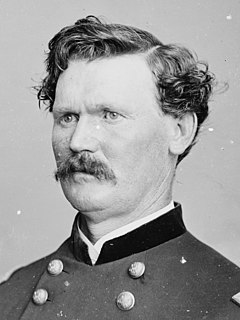
The 1870 South Carolina gubernatorial election was held on October 10, 1870 to select the governor of the state of South Carolina. Governor Robert Kingston Scott easily won reelection based entirely on the strength of the black vote in the state. The election was significant because it proved to the white conservatives of the state that political harmony between the white and black races was impossible and only through a straightout Democratic attempt would they be able to regain control of state government.

The 1872 South Carolina gubernatorial election was held on October 16, 1872 to select the governor of the state of South Carolina. Franklin J. Moses, Jr. won the election as a Radical Republican against the more moderate faction of the Republican Party and became the 75th governor of South Carolina.
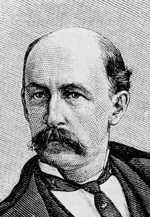
The 1874 South Carolina gubernatorial election was held on November 3, 1874 to select the governor and lieutenant governor of the state of South Carolina. Daniel Henry Chamberlain won the election and became the 76th governor of South Carolina.

The 1880 South Carolina gubernatorial election was held on November 2, 1880 to select the governor of the state of South Carolina. Johnson Hagood was nominated by the Democrats and ran against L. W. R. Blair, a Greenback-Labor candidate. Hagood easily won the general election and became the 80th governor of South Carolina.

The 1882 South Carolina gubernatorial election was held on November 7, 1882 to select the governor of the state of South Carolina. Hugh Smith Thompson was nominated by the Democrats and ran against J. Hendrix McLane, a Greenback-Labor candidate. Thompson easily won the general election and became the 81st governor of South Carolina.
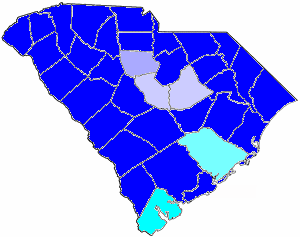
The 1890 South Carolina gubernatorial election was held on November 4, 1890 to select the governor of the state of South Carolina. Ben Tillman was nominated by the Democrats and easily won the general election against A.C. Haskell to become the 84th governor of South Carolina.

The 1892 South Carolina gubernatorial election was held on November 8, 1892 to select the governor of the state of South Carolina. Governor Ben Tillman was renominated by the Democrats and was elected in the general election to a second two-year term.

The 1896 South Carolina gubernatorial election was held on November 3, 1896 to select the governor of the state of South Carolina. William Haselden Ellerbe won the Democratic primary and easily won the general election to become the 86th governor of South Carolina.

Richard Howell Gleaves was a lawyer, merchant, and politician who served as the 55th Lieutenant Governor of South Carolina from December 7, 1872 to December 14, 1876. He served under Governors Franklin J. Moses, Jr. and Daniel Henry Chamberlain. A Haitian-American of mixed ancestry, Gleaves was notable as one of the highest elected black Americans during the Reconstruction Era.

From December 1876 to April 1877, both the Republican and Democratic parties in South Carolina claimed to be the legitimate government. Both parties declared that the other party had lost the election and that they controlled the governorship, the state legislature, and most state offices. Both governments debated and passed laws, created militias, collected taxes, and conducted other businesses as if the other government did not exist. Ultimately, after four months of having a disputed government, Daniel Henry Chamberlain, who claimed the governorship as a Republican, conceded to Democrat Wade Hampton III on April 11, 1877 after President Rutherford Hayes withdrew federal troops from the South.
References
- Reynolds, John S. (1969). Reconstruction in South Carolina. Negro University Press. ISBN 0-8371-1638-4.